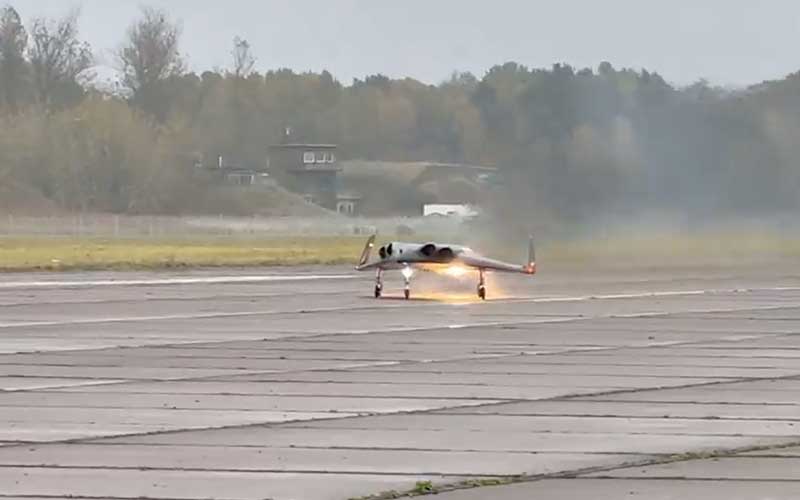
Bremen-based POLARIS Spaceplanes has completed a rocket-powered roll test of its MIRA II demonstrator. The test represented the last major milestone before the company attempts the vehicle’s first rocket-powered flight.
MIRA II is one of a pair of identical vehicles that POLARIS began developing after the original MIRA demonstrator was damaged following a take-off incident just before its first rocket-powered flight attempt.
The 5-metre-long MIRA II demonstrator is equipped with jet engines for takeoff and landing and an aerospike rocket engine for its rocket-powered flight phase. The primary aim of the vehicle is to serve as a testbed for key systems, primarily the company’s in-house developed AS-1 linear aerospike rocket engine.
POLARIS Spaceplanes conducted the MIRA II rocket-powered roll test on 29 October at the Peenemünde Airport on the coast of the Baltic Sea. The 1 kN LOX/kerosene AS-1 rocket engine was fired for just three seconds as MIRA II taxied down the runway. Following the short burn, the demonstrator’s safety system automatically vented the remaining liquid oxygen, a crucial part of the test that validated the vehicle’s abort system.
Testing of the MIRA II demonstrator began on 25 October with a jet-powered flight test. Two additional flight tests followed on 26 and 27 October, with the final test including a mass simulator for the vehicle’s aerospike engine. The aerospike engine was then installed over a period of one and a half days, allowing the company to proceed with the rocket-powered roll test.
Once testing of its MIRA II and MIRA III demonstrators is complete, the company will move on to its NOVA demonstrator. This will be the company’s final demonstrator vehicle and will be used to validate the company’s ability to perform repeatable rocket-powered supersonic flight at high altitudes. POLARIS will then be in a position to proceed with the development of its multipurpose spaceplane and a hypersonic transport system called AURORA. With an expendable upper stage, AURORA will be capable of delivering payloads of up to 1,000 kilograms to low Earth orbit.




